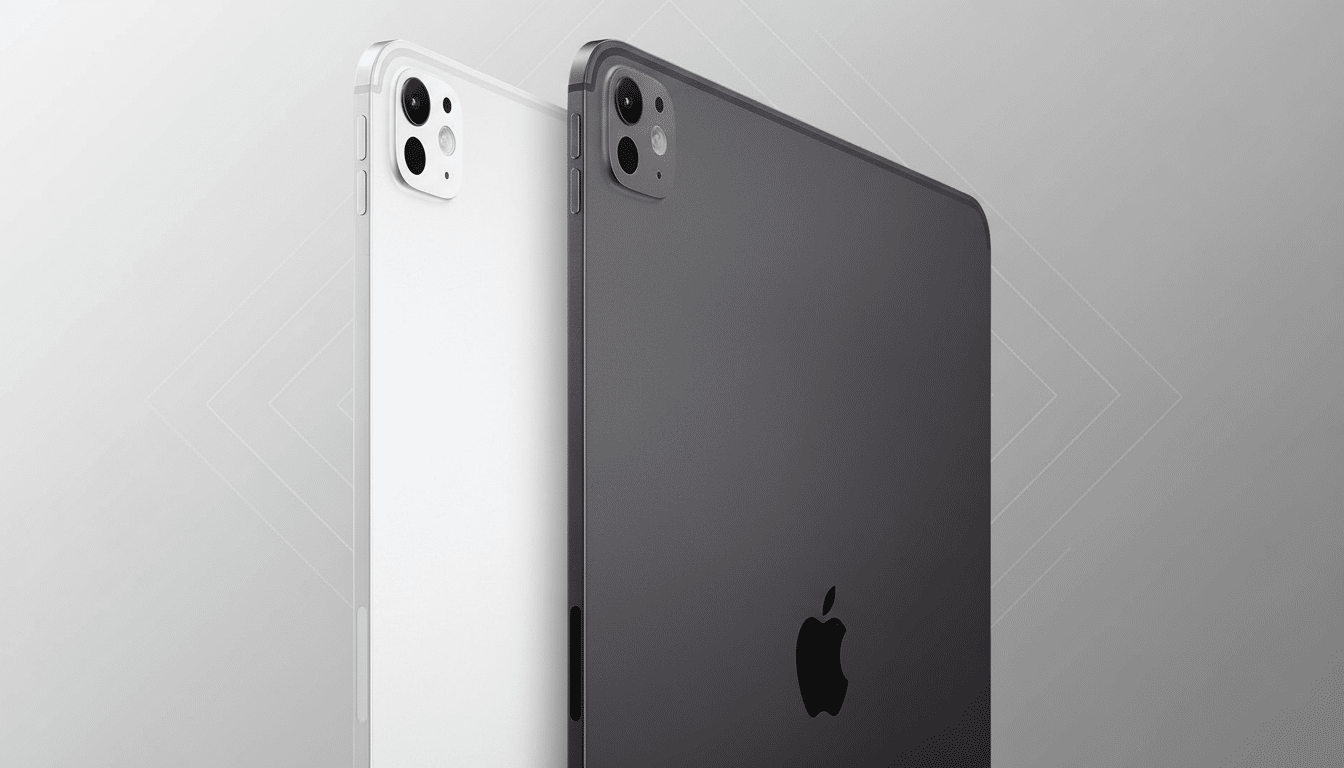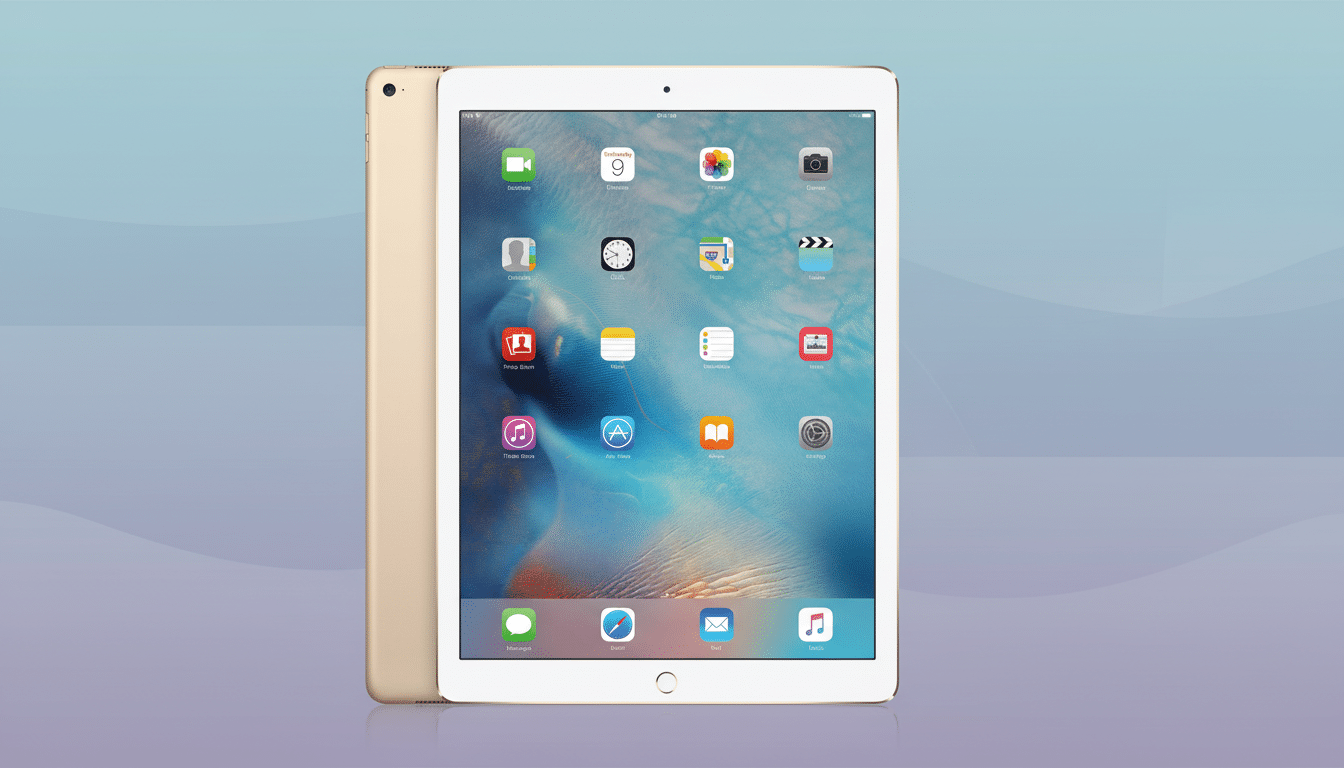Apple will announce three “Pro” devices running on the next-generation M5 chip platform, Bloomberg’s Mark Gurman reported. The lineup is said to feature a new iPad Pro, another Vision Pro headset, and an entry 14-inch MacBook Pro—with the likelihood that we won’t see them appear as a stage event but instead be made via a hush-hush announcement.
If true, the move would speed up Apple’s silicon cadence and shift its most mobile-centric devices (iPad and laptops) onto a single architecture while telegraphing the next beat of where performance-per-watt gains and pro workflows are headed.

What to expect from Apple’s M5-powered iPad Pro
At least 12GB of memory on the upcoming iPad Pro will be paired with an M5 chip and a pair of front-facing cameras (one running camera mode for portrait, landscape, and mid-rotation), according to Bloomberg. There’s a dual-camera setup here that addresses a sore point for video calls, with the tablet keeping users in frame whether docked in landscape or held upright.
Unboxing videos from Russian creators circulating show a design that appears to track closely with the existing model, though sans decorative “iPad Pro” text on the back. More interestingly, the early Geekbench 6 snippets contained in those leaks suggest a decent-ish silicon leap: something on the order of up to 12% better multi-core CPU performance and around 36% more potent GPU scores when compared to the M4 generation. If that gain held true within the context of shipping units, it’d be mostly felt in pro photo edits, 3D work, and high-refresh gaming.
Look for Apple to rely on software to break open the hardware. That’s not least because recent iPadOS updates have added better external display support, provided broader pro-grade color management, and refined multitasking—all features that tend to scale positively with increased GPU cores, memory bandwidth, or neural acceleration.
A leaner, faster Vision Pro successor with M5
The successor to Vision Pro reportedly focuses on comfort, color, and speed. A “Dual Knit Band” may swap out or supplement the strap system in the pipeline for those enduring extended sessions, while an all-new Space Black finish would expand style choices.
The headset is expected to pair M5 with a refreshed R2 coprocessor focused on input processing—hand tracking, eye tracking, low-latency passthrough—under the hood. For mixed reality, that division of labor counts: a few milliseconds less between gesture and response can be the difference between immersion and fatigue.
Connectivity might still be conservative with Wi‑Fi 6 over newer 6E or 7 standards—a reasonable trade-off if Apple’s biggest focus is predictable power consumption and mature radios. As for where these CPUs are made, many semiconductor analysts expect early M5 parts on TSMC’s optimized 3nm (N3E) process with large volumes of 2nm kicking in later. That would harmonize with expectations—modest efficiency tweaks for now and significant architectural shifts for when you hit the next node.
Market context still matters. Though Apple hasn’t revealed first Vision Pro sales, third-party companies such as IDC and Counterpoint Research have described the XR market more broadly as ramping from a small base with price and comfort being critical adoption levers. A feeling of a more lightweight fit and faster on-head computing are aimed directly at those barriers.

Entry 14-inch MacBook Pro moves to Apple’s M5 chip
The base 14-inch MacBook Pro is said to be getting M5 before any M5 Pro or M5 Max refresh. Other hardware changes outside the chip could be few, which is a formula Apple has used when it wants to pull ahead swiftly in improving the performance-per-watt of a core product line without resetting industrial design or supply chains.
M5 will hopefully represent an incremental retirement of workload from CPU to GPU, but the more interesting upgrades come in the media engine and neural processing blocks. Cultivators of our own content are more and more dependent on hardware acceleration for formats like ProRes and AV1, while on-device ML tools like noise reduction, smart masking, and background isolation flourish on faster neural cores. Even minor gains here are tangible time savers in apps like Final Cut Pro, DaVinci Resolve, and Lightroom.
Why a quiet debut for M5 devices still makes sense
Apple has a history of “press release” launches when products are iterative but important. Dropping three M5 products in one go would streamline the messaging—get pro-grade iPad, Mac, and spatial computing all unified at once under the silicon umbrella—and still leave stage time later for more drastic redesigns or higher-end M5 Pro/Max systems.
It also allows retail and channel partners to sync with inventory ahead of peak shopping periods without the logistical whiplash of back-to-back events.
What this means for Apple’s silicon and product roadmap
If Apple puts M5 in iPad Pro, visionOS hardware, and base MacBook Pro first, expect a similar rollout: higher-wattage Pro/Max laptop chips later on, down to larger consumer devices like the MacBook Air and entry-level iPad as yields—and volume—allow.
Bloomberg has also suggested that redesigned versions of the HomePod mini, Apple TV, and AirTags are still on the agenda. Meanwhile, it’s been reported for ages that Apple is investigating touch on Macs, OLED panels for its notebooks, and integrated cellular capabilities in laptops—changes one can imagine being debuted with more substantive product line refreshes than a mid-cycle silicon switch.
For the moment at least, the headline is this: Apple’s next generation of pro hardware looks poised to go, and the M5 era may not start with a bang but with a quietly strategic sprint across three of its most ambitious product lines.

